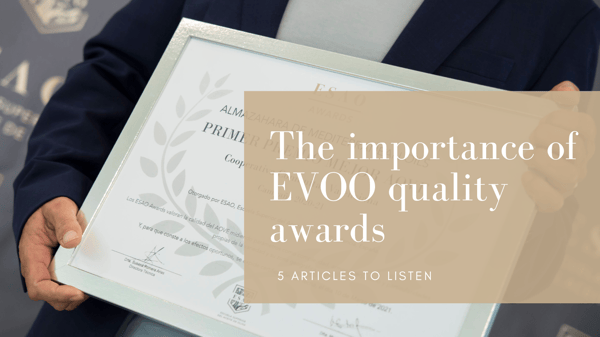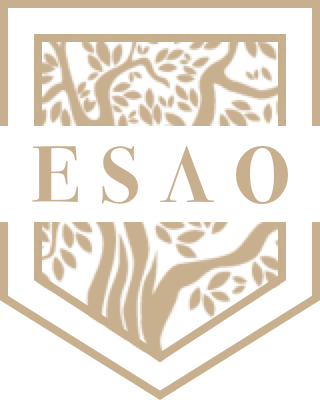Listen to this article
Christoph Sippel is a food chemist and has been working at Eurofins Analytik GmbH (Germany) since 2000. He is the Deputy Head of the Accredited Virgin Olive Oil Tasting Panel by the International Olive Council and an alumnus of ESAO.
He is the deputy director of the Eurofins Analytik (Hanseatic Olive Oil Panel), a recognized panel of the International Olive Council (IOC) and is responsible for the conception and implementation of sensor technology projects.
As part of his studies in Hamburg, he obtained authorization as a sensory taster in 2002.
He is a member of DLG e.V. and has been an expert for DLG since 2007 in various product areas including fish and seafood, vinegar, convenience products, edible oils and fats, and olive oil.
He also holds the position of Vice President of the sensory committee of DLG.
Since January 2018, Christoph Sippel has been working as an independent olive oil consultant with a focus on quality, production, and training.
Professional association memberships:
German Chemical Society (GDCh), Food Chemistry Society (LChG), German Agricultural Society (DLG e.V), and member of the advisory board of the International Olive Foundation (IOF).
Christoph Sippel
What is the typical quality of the samples that arrive at the laboratory?
The quality varies from maximum quality to standard quality, with virgin olive oils and even lampante oils in between. The most common quality grade is extra virgin, but there are several qualities within this class. Their clients are located throughout Europe and sometimes from other continents.
Have you seen an evolution in the quality of the samples you receive, or has it remained the same over time?
That is difficult to answer. I believe that over the years there has been an improvement in quality. However, quality depends not only on improvements in technology and knowledge over the years but also on the conditions and climate of the particular harvest year.
What do you think about the quality of extra virgin olive oils?
The qualities can vary greatly, as the extra virgin category covers a wide range of virgin olive oils.
Ultimately, any olive oil that meets the minimum requirement, i.e., having a fruitiness score above 0 and no sensory defects, corresponds to the highest quality class. Extra virgin olive oils include oils with average quality, as well as oils with a complex and pronounced aroma, intense fruitiness, and therefore, a superior quality class.
Here, a comparison can be made with wines, where all wines, from house wine to special wines, could fall into a category.
Differentiating between different qualities within the same category like Extra Virgin would be very interesting and also useful for the consumer.
Do you think the end consumer values the quality of olive oils?
As with many products, consumer buying behavior varies.
For some consumers, price plays an important role, but there is a certain proportion of consumers who appreciate quality as well as the flavor differences between different olive oils.
However, it is difficult for the consumer to evaluate quality and sensory profile, and the bitter or pungent taste of the oil must also be considered.
This requires knowledge, similar to wine, of the typical characteristics of the variety and growing regions. It is almost impossible to evaluate this based on the information on the respective olive oil label because most labels do not provide additional information, except for PDO olive oils.
What physicochemical parameters are most demanded?
The most important parameters are, of course, the traditional ones such as Acidity, Fatty Acid Spectrum, and K values. However, other important parameters also provide information about the quality of olive oil.
These include Pyropheophytins (PPP) and diacylglycerols (DAG). PPPs are formed as a result of the thermal degradation of olive oil, and they form at a predictable rate during long periods of storage, providing information about the age of an olive oil. DAGs can also provide a clue about the age of an olive oil, and the ratio of different forms of DAG indicates the quality of the original olive and its processing method.
Furthermore, the method used to test the origin of the oil, e.g., via NMR, will be more important in the future. This method is also used to compare samples with the olive oils that are then bottled for sale. It allows determining if two olive oils are identical.
In summary, we have quality parameters on one hand and authenticity parameters on the other. Both areas play an important role and together provide a complete picture of the olive oil.
Do you think a guide to the best olive oils in the world could be useful, based in part on the Mario Solinas quality Awards from the IOC?
I think it would be very useful to give consumers an idea of the sensory profiles that different olive oils can have and help them choose their favorite.
What is the biggest challenge you see with extra virgin olive oil?
The criteria for extra virgin olive oil are not particularly strict. This applies especially to the sensory evaluation; a fruity score slightly above 0 is sufficient for the highest quality class.
Therefore, this class is relatively easy to achieve if the oil is produced cleanly and certain criteria are observed. In my opinion, this category is very broad and could be restricted by stricter rules or limits.
This would mean that the second quality class, virgin olive oil, would be improved and could become more important in the market.
What is the most significant indicator, in your opinion, of the highest quality extra virgin olive oil?
Sensory analysis is the number one parameter for us in this regard, as it provides information about the quality of the olive oil.
Physicochemical analyses support the sensory evaluation and, of course, must also be met. However, through the sensory system, the flavor profile, aroma, and balance of an olive oil can be determined, as well as whether or not it is a high-quality product.
Can you share any news related to olive oil from Eurofins Analytik?
Our internal sensory panel at Eurofins received recognition from the IOC last year. Since December 2020, our Hanseatic Olive Oil Panel (HOP) has been included in the list of laboratories recognized by the IOC.
Furthermore, in recent years, a 1H-NMR method has been developed to test the origin of olive oils. It works very well for single-cultivar oils from Italy, Spain, and Greece.
This is especially important for olive oil authenticity in terms of food fraud. With this method, we can also perform cross-verification between different reference samples or between mother batches and market samples. These methods are very useful for establishing quality assurance and ensuring consumer protection.
What is the main reason why producers of extra virgin olive oil should strive for the highest quality?
Olive oil prices are quite low, so producing high-quality oils gives producers the opportunity to charge higher prices.
There is a market for high-quality extra virgin olive oils that are not just average quality. In this market, you get higher prices and become independent of large companies that often dominate the market.
What can you tell us about the by-products of the olive grove and their energy or fertilizer potential, for example?
The olive pomace can be used to make barbecue briquettes, and bio-phenols can be extracted from the wash water and used in supplements. Unfortunately, it is not allowed to use the water used during production, which is separated from the olive oil, for irrigation. However, there are several projects designed to remove the bio-phenols using ultraviolet light, for example.
What is your opinion on the future of extra virgin olive oil?
I believe that in the future, more olive oil will be produced outside of the Mediterranean region, which will lead to increased competition for the Mediterranean region to face. Initially, this may impact the standard qualities as other continents are free from traditional constraints and can optimize production. Therefore, they will be able to produce transparent oils with standard qualities for the common market.
Additionally, in the future, new harvest oils will be available twice a year, and olives will be cultivated in both the northern and southern hemispheres.
I hope that a quality sector will develop in the future, providing new markets for consumers interested in high-quality extra virgin olive oil.
Olive oil is not only a functional food but also plays a significant role in cuisine as a flavor enhancer for dishes and as a key component of the Mediterranean diet and nutrition.
How can an olive oil producer benefit from the services of Eurofins Analytik GmbH laboratory?
A producer can utilize our analysis portfolio to assess their olive oil at a sensory, physical, and chemical level to determine its corresponding category.
Therefore, we can assume the role of quality assurance and compare the results with internal quality standards. Additionally, with our laboratory's extensive experience in the field of olive oils, we can assist producers in their quality development, including on-site visits for direct guidance. We also offer audits in this area.
* This conversation is an extract of the ESAO GUIDE, 2020/21 Edition. You can check the current guide here.
This guide collects the extra virgin olive oils awarded in the three most important competitions in the olive sector. In the ESAO GUIDE you can find:
- ESAO Stars, a recognition of the quality of the most awarded oils.
- The winners of the international competition Mario Solinas of the International Olive Council.
- The winners of the Food of Spain awards, of the Ministry of Agriculture, Fisheries and Food of the Government of Spain and
- The winners at the ESAO Awards.
- Interviews with personalities from the olive sector.
.png)






